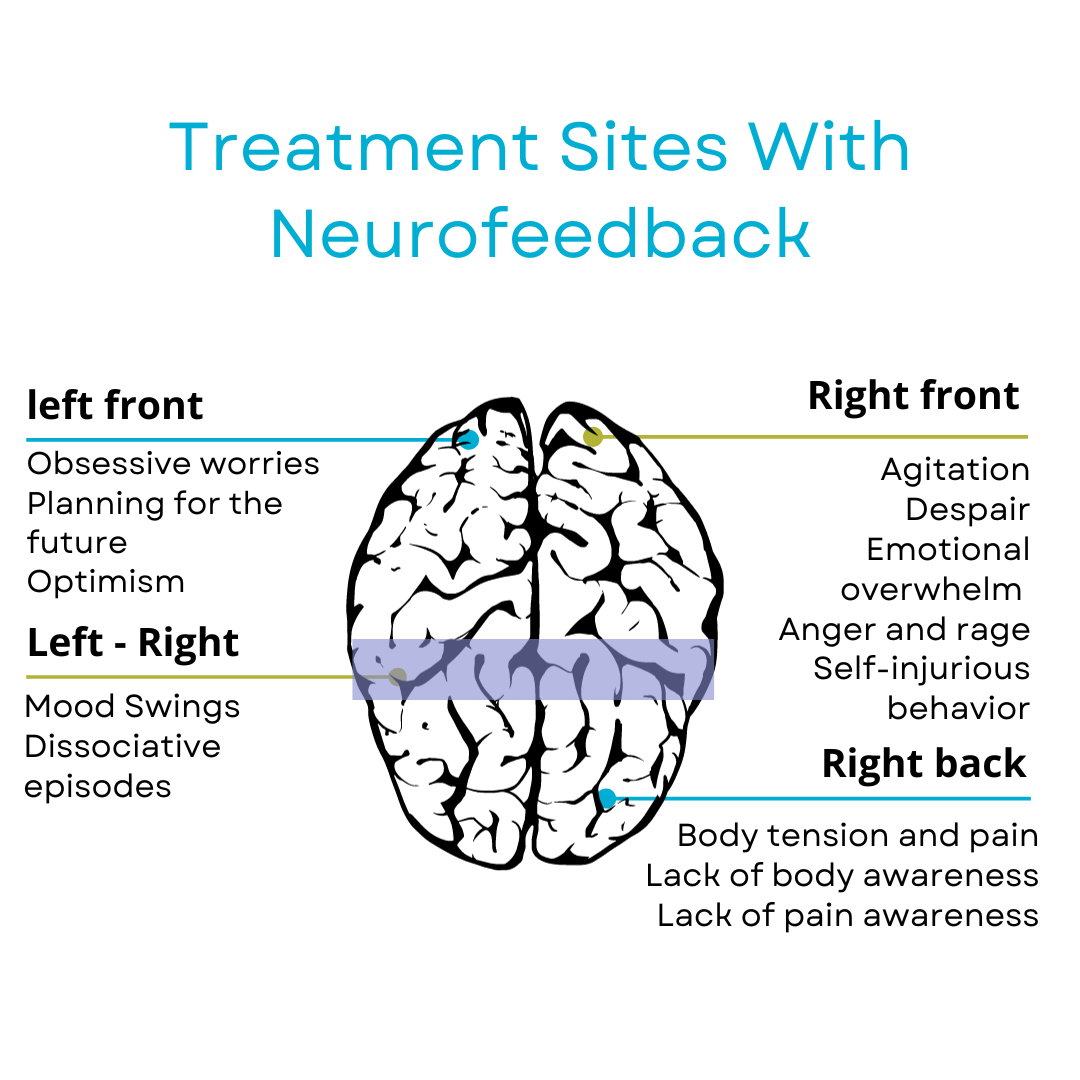Sports Enhancement & Peak Performance
Neurofeedback has emerged as a promising tool for enhancing peak performance and sports-related skills by targeting the underlying neural processes associated with optimal cognitive and physical functioning. This technique involves real-time monitoring and modulation of brain activity, often through electroencephalography (EEG), to optimize neural patterns linked to improved performance.
In sports, achieving peak performance requires a delicate balance of physical skill, mental focus, and emotional regulation. Neurofeedback can contribute to this balance by training individuals to self-regulate their brain activity, enhancing concentration, reducing anxiety, and improving overall cognitive function. Athletes can learn to achieve an optimal state of arousal and focus, which is crucial for making split-second decisions and executing precise movements.

Unlike traditional medications that may have unwanted side effects or impact overall physiological functioning, neurofeedback offers a non-invasive and targeted approach. By providing real-time feedback on brain activity, individuals can learn to enhance specific neural patterns associated with peak performance without relying on pharmaceutical interventions.
Research in the field of sports psychology and neurofeedback has shown promising results. Athletes who undergo neurofeedback training often report improved focus, faster reaction times, and enhanced emotional control. By addressing the neural mechanisms associated with performance, neurofeedback becomes a valuable tool for athletes seeking a competitive edge and an avenue for achieving optimal results in their respective sports.
Studies
Boynton, T. (2001). Applied research using alpha/theta training for enhancing creativity and well-being. Journal of Neurotherapy, 5(1-2), 5-18. Introduction. Previous research has echoed anecdotal suggestions of a potential link between the state of hypnagogia and the augmentation of creative abilities (Green, 1972; Green, Green, & Walters, 1970, 1974; Parks, 1996; Stembridge, 1972; Whisenant & Murphy, 1977). Certain psychologists (e.g., Maslow, 1963; Rogers, 1978) have proposed a correlation between creative prowess and enhanced well-being. Methods. This 8-week repeated-measures experimental study explored the impact of electroencephalogram (EEG) biofeedback on deliberately harnessing hypnagogia to boost creativity and well-being. The sample, comprising 62 participants (30 experimental, 32 controls), encompassed both genders with an average age of 45. Hypnagogia’s EEG parameters were broadly identified as the presence and predominance of alpha and theta brain wave activity. Creativity was assessed through three widely acknowledged divergent thinking abilities: (a) fluency (generating numerous ideas), (b) flexibility (viewing a problem from multiple perspectives), and (c) originality (creating new and unique ideas). Results. Hypnagogia analysis via multiple univariate analyses of variance revealed that both experimental and control participants consistently achieved light to deep hypnagogic states in each training session. T-test results for fluency and originality scores indicated no significant changes in pre- and post-tests for either group. However, flexibility in thinking, assessed by the Alternate Uses Test, significantly increased (p < .001) for all participants. Well-being, measured by the Friedman Well-Being Scale, also notably increased for everyone (p = .002). Discussion. The data imply that intentional use of hypnagogia may indeed heighten creativity and well-being. Participants reported enhanced personal creativity, stress reduction, heightened self-awareness, emotional equilibrium, and improved work performance.
Gruzelier, JH, Foks, M, Steffert, T, Chen, MJ. & Ros, T. (2013). Beneficial outcome from EEG-neurofeedback on creative music performance, attention and well-being in school children. Biol Psychol. 2013 Apr 25. pii: S0301- 0511(13)00099-9. doi:10.1016/j.biopsycho.2013.04.005. [Epub ahead of print]. In our previous study (Egner & Gruzelier, 2003), we highlighted the creativity benefits in rehearsed music performance resulting from alpha/theta (A/T) neurofeedback in conservatoire studies, a trend not observed with other training methods or controls. We shifted our focus to the impact on novice music performance, comparing A/T and SMR training in 11-year-old school children against non-intervention controls. A/T and SMR/beta2 ratios demonstrated effective learning in the school setting, with A/T showing preferential benefits for rehearsed music performance, extending to technique and communication ratings in children. Both A/T and SMR training yielded benefits for creative improvisation, revealing the influence of SMR on unrehearsed music performance at a novice level. A/T proved more successful than SMR in improving sustained attention, notably reducing commission errors, particularly in children with attention indices in the ADHD range. Phenomenological reports favored neurofeedback, showcasing well-being benefits. The implementation of neurofeedback in the daily school setting proved feasible and holds promise for pedagogical applications.
Hanslmayer, S., Sauseng, P., Doppelmayr, M., Schabus, M., & Klimesch, W. (2005). Increasing individual upper alpha by neurofeedback improves cognitive performance in human subjects. Applied Psychophysiology & Biofeedback, 30(1), 1- 10. We tested the hypothesis that neurofeedback training (NFT), designed to boost upper alpha and diminish theta power, could enhance cognitive performance. Participants engaged in a mental rotation task before and after upper alpha and theta NFT. Notably, only individuals who successfully increased their upper alpha power (responders) demonstrated improved mental rotation performance post-NFT. The degree of training success, measured by the increase in upper alpha power, correlated positively with cognitive performance enhancement. Additionally, EEG analysis in NFT responders revealed a significant rise in reference upper alpha power during a pre-task interval, aligning with findings that increased upper alpha power before a task relates to superior cognitive performance.
Hatfield, B, Haufler, A. (2009). Brain processes and neurofeedback for performance enhancement of precision motor behavior. NeuroImage, 5638 810-817. Drawing from various empirical studies investigating cerebral cortical dynamics in precision aiming tasks, such as marksmanship, using electroencephalography (EEG), refining cortical activity, and minimizing nonessential cortico-cortical communication with motor planning regions has demonstrated superior performance. Employing EEG neurofeedback during the aiming phase of target shooting, specifically to decrease cortical activation, has been shown to enhance performance in skilled marksmen. This suggests a causal relationship between the refinement of cortical activity and improved performance. In a recent study focused on the stress of competitive target shooting, increased activation and cortico-cortical communication between non-motor and motor regions were observed compared to a practice-alone condition. As anticipated, this heightened activity was linked to a decline in shooting performance. These findings indicate that neurofeedback targeted at brain regions associated with emotional responses may preserve the cortical dynamics linked to superior performance, ultimately leading to improved accuracy in precision aiming tasks.